Online education has many stereotypes about it. People often think that online students are not smart enough for their usual college or university education. They are lazy and do not get “real” degrees. These thoughts discourage many people from taking online courses, so they get stuck in the traditional educational system, which wastes a lot of money, nerves, and years of their lives.
Contents:
After the pandemic, the digital way of studying spread like wildfire. The mobile e-learning market is expected to reach USD 57.19 billion by 2028. So it’s a great opportunity for startups and small businesses to dive into this sphere. Moreover, if you provide traditional offline courses, switching to online might skyrocket your profit numbers.
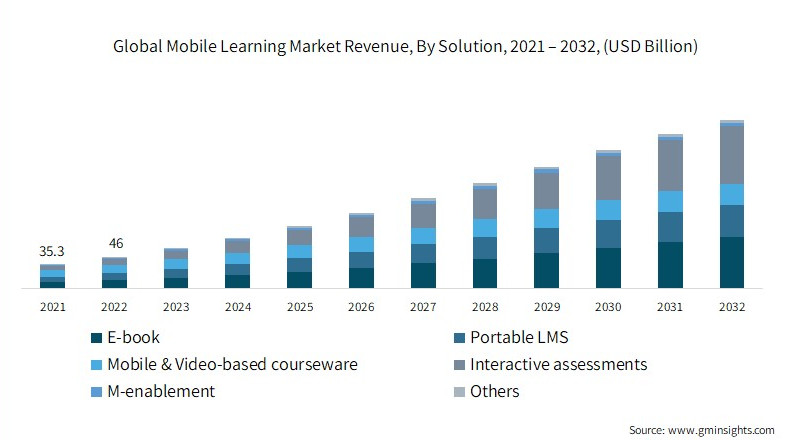
Let’s look closer at the benefits and disadvantages of online learning that can make you reconsider your attitude towards this type of e-business.
What are the advantages of online learning?
1. You can learn whatever you want!
With online courses, you can take any program or course at traditional four-year universities. For example, if you are interested in neuroscience, all it takes is a Google search for such an online course and you will easily find online programs offered by some of the most prestigious universities from around the world. You can take such a course even if you have no desire to apply this knowledge in your future profession but are just interested in discovering new interests and understanding how the human brain works. The wide variety of online programs and courses is a tremendous advantage of this type of education. No matter where you live and what you want to study, you can always find the right course or even a degree program that you can follow from home.
2. Comfort
Forget about having to attend classes for hours, sit in an uncomfortable chair and suffer from back pain by the end of the day. All lectures and required materials are provided through online platforms, so you can easily access them from the comfort of your home. Public transportation won’t get you to campus. You won’t have to spend money on gas for your car. You won’t have to get up early to get dressed for class, etc.
Comfort is a strong advantage in the age of rising online education, but it can go both ways. You shouldn’t let yourself get too comfortable when studying at home, so it’s best to leave the couch for a few hours a day and create an inspiring study environment in your home. All you need is a large table and a nice comfortable chair. Some online platforms we’re working with, like CG Master Academy, have convenient built-in academic calendars that allow you to plan your schedule:
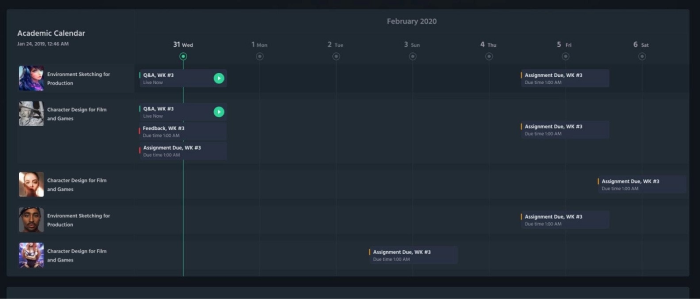
3. Online courses look great on resumes
It doesn’t matter where your career is right now; an online program will always look good on your resume. This will show potential employers that you are eager to learn and want to gain more knowledge and new skills. By earning a good certificate or diploma after online training, you are sure to be a better candidate for a promotion and your resume will look much better when you apply for a new position or vacancy.
4. Self-study
When you browse interesting online courses and programs, you will see the Self-Paced label on most of them. What does it mean? Self-paced learning means that students start tasks and they create a learning schedule that suits their individual needs. When you go to college, you can forget about work, hobbies, and even family. Under such conditions, studying is a priority. Therefore, many single parents and working people choose to forget all about their dreams in order to get a higher degree.
The self-learning system allows them to progress at a pace that suits them. This type of system does not require lecture attendance; You can access the materials at any time convenient for you. If you have to work or take care of your home and children during the day, you can study at night. This is an advantage that the education system we are accustomed to cannot surpass.
5. Cost reduction
Almost 90% of companies provide their employees with e-learning possibilities, while 68% of people say they prefer studying at work.
The fact that online programs are cheaper than those offered at colleges or institutes is enough to convince you to consider them. The average fee for online courses depends on several factors, so it varies from one program to another. We’ve saved the best part for last: many online courses are completely free. For example, MIT offers all course materials online at no cost. Free courses rarely come with a certificate of completion, but they are still more than useful for those who want to learn from prestigious educators. Online courses and programs are more convenient and cheaper than their counterparts in traditional education.
The best thing about online learning is that you can learn at ease. All you need is a passion for learning and a good internet connection to get you on the right course.

Illustration by Liubov Dronova
What’s Wrong With E-Learning Platforms?
1. Lack of social interaction. E-learning has yet to imitate it.
The way e-learning platforms have tried to recreate the social aspects of a classroom is with tools like messaging boards, video chats, chatbots, and streaming services. They grant students the opportunity to talk with teachers and peers about their homework. Of course, this doesn’t replace talking with peers or having a teacher know your name, especially in MOOCs.
2. Some users can’t or won’t work with online tools
When teachers or other “offline specialists” switch from an offline format to an online one, they may not figure out how to work on the learning platform and other programs necessary for learning the first time. For example, how to work with Google Docs and a video editor, and how to create presentations. This lawyer got stuck with a cat filter during a virtual court case:
For effective learning, you need a stable Internet connection and the correct operation of programs and devices. Sometimes there are technical failures that an unprepared person cannot handle.
3. Difficulty retaining attention and engaging students
When learning takes place online, teachers rarely have visual contact with students. They cannot assess the level of their attention and involvement. Because of this, it’s difficult to make sure that the students are immersed in the material, understand it, and have no questions left.
It is important to learn how to manage the attention of a remote audience, emotionally, involve listeners in your story, and explain the material in such a way that you can be heard and understood. To get such a skill, study the list of books on distance learning and select the appropriate literature.
The online learning method can be a very effective alternative learning method for mature, self-disciplined, and motivated students who are well-organized and good at managing their time. But this learning environment is inappropriate for dependents and dependent people. Online courses require independence.

Illustration by Liubov Dronova
What’s Wrong With Traditional Classrooms?
In a traditional classroom, educators will tell you they need to be on their toes, trying to engage their students at every moment. But students don’t always cooperate — maybe they’re bored, zoned out, or too focused on the sun outside to pay attention to a lesson.
That lack of engagement is a challenge for students as well. Despite these problems, once the teacher and the student meet in the middle and find that engagement, it’s magic. Being surrounded by like-minded people, actively taking part with peers, and seeing students come alive once things click is a social energy you can’t replace — even with AI or smart assistants.

Illustration by Liubov Dronova
Why E-learning Platforms Change over Time
- Time and location independence. E-learning provides the greatest possible flexibility in terms of time and space. In contrast to classic face-to-face training, users are not tied to fixed dates, but can divide the course according to their resources. This allows you to learn at your own pace without having to coordinate with lecturers or other participants.
- Cost savings. While only a small group of participants can take part in offline training courses, the number of users of electronic courses is, in principle, unlimited. A program license can therefore be used by all employees of a company. In addition, there are no travel costs or expenses for planning and conducting the training.
- Standardized quality. Due to the onetime provision of the respective e-learning program, there are basically no fluctuations in the teaching quality. The success of the respective measure no longer depends on the form of the lecturer on the day, which is why consistent quality is guaranteed when selecting the appropriate electronic courses. For example, one of our clients, Proko, is famous for their standardized and structured online art classes.
- Interactivity. Depending on the program, interactive modules such as videos or animated content can be integrated. The provision of tests and learning status checks at the end of a lesson can also significantly increase long-term learning success and motivation.
- Multilingualism. Depending on the programming, the same e-learning module can be presented in different languages. This enables greater individuality and greater user-friendliness, especially in international companies, than may be the case with classic training courses, which in most cases are carried out using a central basic language.
What Does The Future Classroom Look Like?
According to Quora’s answers from teachers, online tools give them precise, clear-cut feedback on how a student is engaging with the material. They can see where students get lost in a lesson and grade assignments with the click of a button.
If a platform could actually cater content and interaction around the individual user — their speed, their interests, their location — then e-learning could give them the ability to learn whatever they want, from wherever they want. E-learning tools provide educators and students with access to resources they wouldn’t have had otherwise, no matter their status or location. In general, here are the features that you can include to make a cutting-edge toolkit:
Immersive learning with AR and VR
The technologies of augmented and virtual reality broaden the educational possibilities, allowing to conduct of virtual experiments and providing new environments that are inaccessible, or difficult to access in reality. They help popularize remote learning and introduce innovative ways to comprehend information, fuelling up students’ imagination and creativity. They also add a practical aspect to theoretical learning and can provide simpler explanations of complex issues. For business owners, they mean another profitable investment, making an app more immersive and increasing user retention. Applications using the benefits of AR and VR feature heightened interactivity and more visual content.
Immersive technologies are used to train employees, for example, in the case of medical students and practitioners. Such trainings save companies’ time and money letting employees receive new skills without transfer and spending money on expensive equipment.
Although VR apps still present some issues connected to technology costs, AR apps are much more widely used since they only need a phone for them to function. Meanwhile, with the passage of time and the advent of the latest technologies, AR and VR apps are becoming less costly and faster to make.
AI in e-learning
Artificial intelligence technologies are exactly what help to make online learning personalized by understanding users’ behavior, identifying their weak points, and offering ways to remedy the situation. AI uses complex data analysis algorithms to enhance educational management systems and help students learn. The statistics are astonishing: AI in the education market will likely surpass $30 billion by 2032. At the beginning of 2023, there were already around thirty EdTech unicorns worth $89 billion.
Voice assistants, one of the benefits of digital education that is based on the advancement of AI, allow the students to converse with educational materials without the involvement of the teacher. Voice apps in education also have a huge potential among kids. Last April, one of the voice-based AI EdTech startups for children — MyBuddy.ai — managed to close a $1M funding round.
Moreover, artificial intelligence tools and devices have been aiding in making learning environments accessible to all irrespective of their language or disabilities. Apps that use AI tools can be all-inclusive. Examples of mobile learning apps using AI algorithms include Otter Voice Meeting Notes. It’s an app that can transcribe voice-to-text in real-time and generate notes, offering students with learning disabilities more control over their academic accomplishments.
AI also helps to make the task of grading easier for teachers by doing it automatically. It improves grading accuracy and frees up a lot of teachers’ time which they can spend on preparing for lessons, enhancing the course materials, and personal development.
In case you decide to integrate this tech, here are some popular types of AI applications in e-learning:
- Chatbots: chatbots in education are AI-powered assistants available 24/7 to answer your student’s queries. While your human support team deals with more pressing issues, the robotic helpers guide learners through their courses and address common questions. This real-time assistance fosters a sense of engagement among your students.
- Recommendation systems: with Artificial Intelligence, you analyze user behavior and preferences to suggest relevant courses, modules, or resources. This way, you help learners discover new content that aligns with their interests, ensuring more personalized learning.
- Intelligent tutoring systems: they use smart algorithms to provide personalized feedback and guidance. They adapt to each learner’s pace and abilities, so that students receive the support they need, whether they’re struggling or excelling.
- Natural Language Processing: using this technology, AI understands and responds to natural language. This means improved communication between students and virtual tutors.
Here are a few successful e-learning apps to take into account:
- Praktika: an immersive language-learning app where students can talk with virtual tutors on different topics, ask questions, and improve their speaking skills. Tutors serve as language companions and assist people in practice.
- Gradescope: with this tool, you can assist in grading and providing feedback to educators, streamlining the assessment process. Students can use the Gradescope mobile app to submit their assignments and coursework, while teachers create, administer, and evaluate assignments on the same platform.
- EdApp: this LMS offers various AI-powered features to support learners. It provides a convenient platform for organizations to deliver and manage staff training and educational content through mobile devices. With smart algorithms, you can quickly create courses and reduce research time.
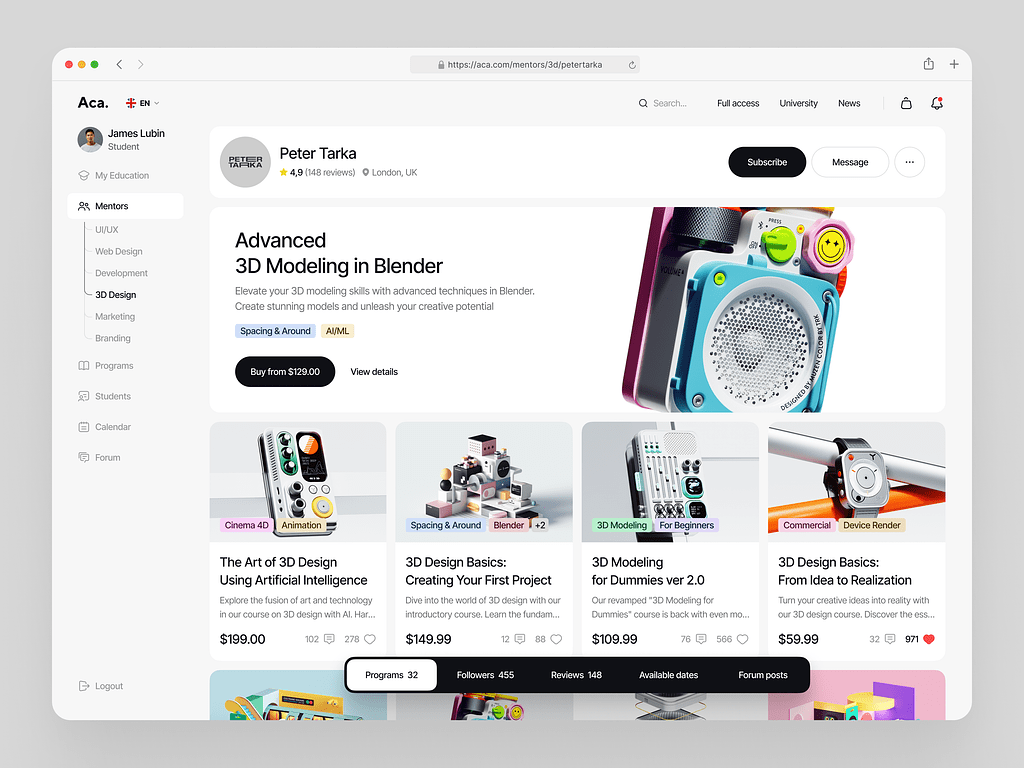
Online Courses Platform Website Dashboard by Shakuro
Gamification makes everything funnier
Using a game-based approach is one of the fastest-growing trends in mobile app development and e-learning app development in particular. App developers successfully use gamification techniques in various kinds of applications from fitness to banking, but they come in especially handy in apps for educational purposes where they have the power to make the whole process easier and more engaging for the students. It’s one of the simplest ways for you to add some fun and excitement to your app, as well as the ability for students to set and attain their goals faster. Also, for an educational app developer, it’s a great way to increase engagement and the app’s ROI, as a result.
What’s more, not every person finds it enjoyable to study regardless of how the knowledge is presented. For kids in particular it’s much harder to concentrate than for adults. Gamification makes the learning experience funnier transforming it from a chore to an enjoyment. In the case of kids’ apps, this approach is compulsory.
Gamification techniques include levels, progress bars, points, badges, or other kinds of rewards for correct answers, leaderboards, etc. For example, at the moment we are in the process of developing a new web educational platform for the Proko online resource for artists. One of the features of the new platform is its gamification when people get credit for everything they do on the website including watching videos, helping other users, and completing assignments.
Mobile learning is the new norm
Mobile learning is the main educational trend by itself, becoming more widespread and trending in every part of the world. The rising penetration of smartphones and internet access make e-learning more accessible with every passing year, increasing the number of educational app users and encouraging the rest. The demand for mobile education is high: the e-learning industry is expected to be valued at more than $315 billion in 2023, with a 20% CAGR from 2022 to 2028. While 42% of businesses say that e-learning has increased their income. That’s why we have the whole article dedicated to the subject of e-learning market potential and how an educational app could be beneficial for your business.
So it wouldn’t be an exaggeration to say that the whole world economy nowadays relies on the development of mobile software and its quality. It makes mobile learning the heart of today’s education, giving students the possibility to learn anything anywhere and anytime, and making them popular and sometimes even indispensable. The reality is that people want to access learning materials using their mobile devices.
Mobile apps can also be quickly deployed and easily updated. They are more personalized and offer additional advantages in comparison with websites like push notifications which makes them a promising business asset.
This trend is also connected to other tendencies in e-learning like microlearning, blended learning, and the popularity of educational video content. Mobile learning is the future of education so it’s time for the mobile-first approach and focusing on delivering your solution for mobile users first.
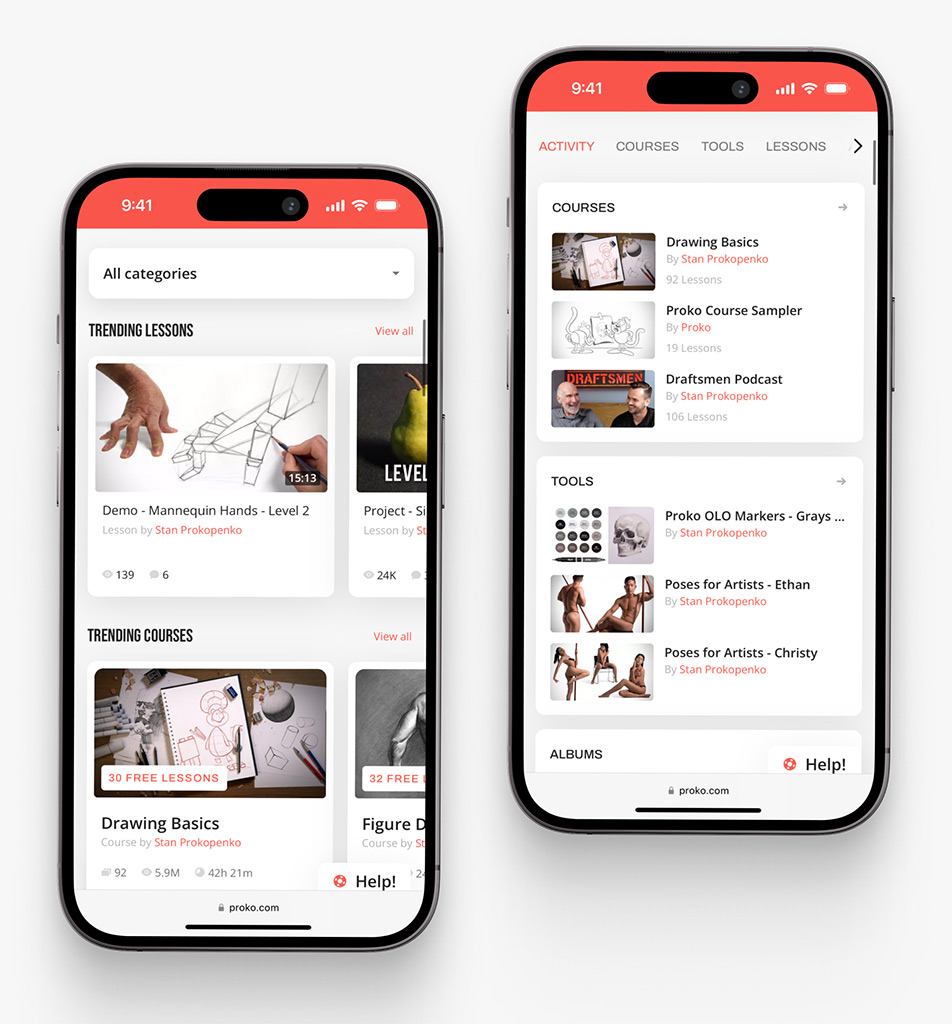
Proko app on mobile by Shakuro
Flexible and rewarding personalized learning
The digital environment, tailored to the interests and preferences of users is one of the main reasons why people like using mobile apps in education so much, especially the younger millennials and members of the Gen-Z generation. They want knowledge, specifically packaged to address their needs. So developing educational apps, think about personalizing them. It’s a thing worth considering and investing in.
Learning app personalization gives students a superior experience and better control over their educational process, letting them form their learning curriculums and to some extent set the overall pace. It also gives them the possibility to take control of how their learning environment looks and feels (choosing custom backgrounds, avatars, and sounds). All in all, the ability to take on only those lessons and subjects students are in need of, means more freedom and the discovery-oriented approach makes adaptive learning more comfortable, enjoyable, and rewarding. This means that learners will use your app more willingly and stay there longer. When engaged in education software development, create content based on your target audience’s preferences, interests, goals, past experiences, and future needs.
Personalization is also great for corporate learning apps as it helps to achieve only those goals that would help businesses grow. Statistics say that the revenue generated per employee is 26% higher for companies that offer training using the e-learning approach, so investing in corporate educational mobile app development is a great business opportunity.
Microlearning — the 21st-century way to learn
Similar to micro training in fitness, this technique is a life savior for people who haven’t enough time to spend on education in one go. Besides, continuous learning requires not only a considerable amount of time but a lot of attention which not everybody is ready to provide. Integrating microlearning in an app can help solve these issues and attract a wider audience of learners of all ages and professions. Microlearning has been shown to increase retention rates by 25% to 60%.
Microlearning is about dividing the educational process into small multiple parts for students to spend no more than a few to ten minutes per one short bit. It lets them conveniently study during the day when convenient if just a little at a time. The versatility of this approach lets educational app development companies use different kinds of learning applications with an equal level of success. The most beneficial way to adopt this approach is to use it together with the traditional ones depending on the subject and uses of your app and its structure.
Social learning — collaboration in action
Social learning is the first kind of education every child receives when trying to copy the behavior of parents or other significant adults, although at that stage it’s not yet formal. So it comes naturally to the majority of people in adulthood also to continue using this kind of learning at home, at university, and at work. You can add social features to your e-learning app by integrating it with existing social networks or introduce an internal solution and make the app more attractive to people who prefer this way of learning.
Communities where people practice, ask for help and evaluation, and receive feedback from instructors and peers are a great lever for continuous learning. Studies show that using collaborative learning leads to increased involvement and better retention of knowledge.
From the business perspective, integrating an app with social networks makes a commercial setup more visible to a wider audience, expanding the client base, and promoting your educational product or service.
Continuous learning
We already mentioned this e-learning trend above. People keep acquiring new soft and hard skills throughout their whole life to stay competitive. So education turns out to be an ongoing, lifelong process rather than something limited to a specific period of life. That’s why the studying process will seamlessly integrate into the daily workflow, where essential resources are available when and where they are needed the most.
LinkedIn is a well-known social network. Its Learning offers a vast library of online courses and video tutorials that cover a wide range of professional topics. The platform encourages continuous studying and skill development to help users advance in their careers.
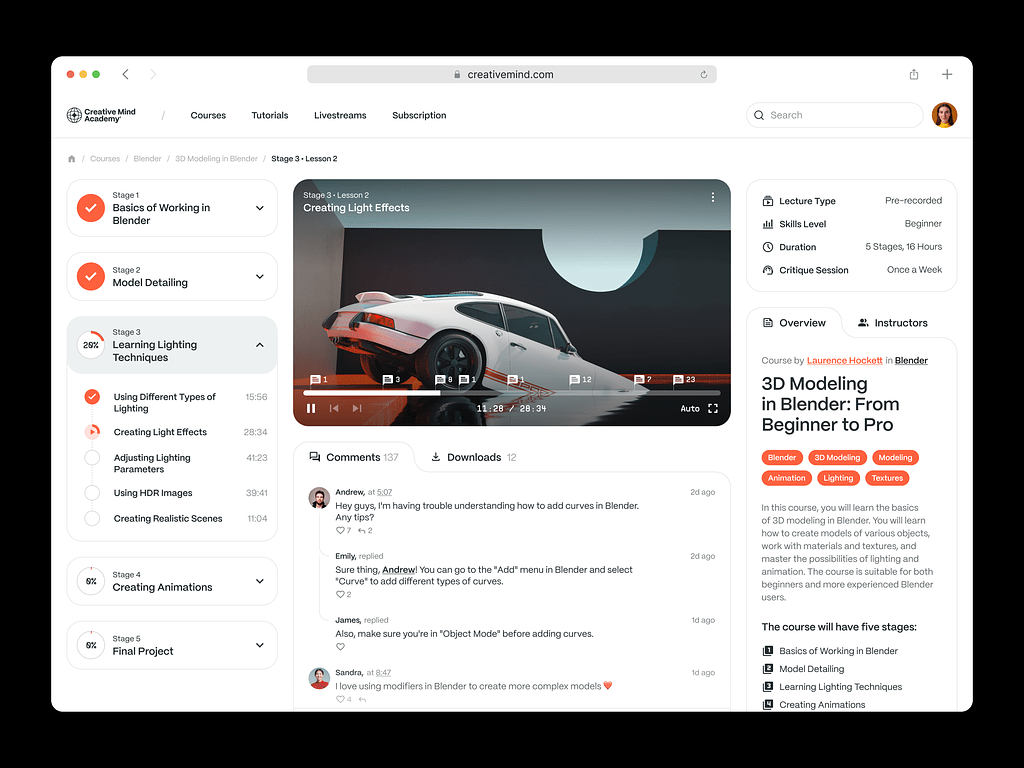
Online Courses Platform Website by Shakuro
Diversity, Equity, and Inclusion (DEI) training
This trend is a type of educational program designed to promote and foster diversity, equity, and inclusion in workplaces, educational institutions, and other organizations. DEI training aims to create a more inclusive and equitable environment where individuals from diverse backgrounds, including different races, ethnicities, genders, abilities, and other characteristics, feel respected, valued, and empowered.
This type of training can take various forms, including workshops, seminars, online courses, one-on-one coaching, and ongoing programs. However, it is not a one-time event but an ongoing process that requires commitment and sustained effort to create lasting change.
Google has been a leader in DEI efforts, offering extensive digital learning to promote diversity and inclusion in its workforce. They have also made their unconscious bias training materials available to the public.
Blockchain
Blockchain technology benefits education by ensuring secure, tamper-resistant data storage. This means easy verification of credentials, data privacy, and transparency. It decentralizes platforms, automates processes with smart contracts, reduces fraud, and fosters global recognition of educational achievements.
Some companies and institutions are integrating blockchain trends into Learning Management Systems (LMS) to enhance the security and transparency of learner data, grades, and achievements. This can improve the trust and integrity of educational records.
Microcredentials
They are short, focused courses or programs that offer certification for specific skills, knowledge, or competencies in a particular subject area. They are flexible and convenient, so people can acquire targeted skills without committing to a full degree program.
This 2024 trend often comes with a digital badge or certificate upon completion. These digital credentials can be showcased on resumes, LinkedIn profiles, or other professional platforms, helping students demonstrate their expertise to potential employers. Some courses offer academic credit that people can apply toward a degree program if they choose to pursue further education.
EdX offers a wide range of microcredentials in collaboration with universities and institutions. They cover various subjects and enhance specific skills and knowledge.
Audio and video content is the king
YouTube gets over 30 million visitors per day and not all of them are there for funny kittens only. TED-Ed, SmarterEveryDay, Vsauce, AsapSCIENCE, National Geographic — these are just a fraction of seriously popular educational channels. Moving pictures has always been one of the easiest ways to get new information.
The integration of video content into mobile apps for learning, if it doesn’t go against their format, makes them more interesting, with easier-to-digest content. It is still a widespread practice to hold webinars. What’s more, virtual conferences are among this year’s hottest trends in education in various industries, and with the current health situation in the world, it’s likely to continue. So adding streaming options and video chat to your mobile education product is likely to make it more up-to-date and competitive on the market.
As for the audio content, you can incorporate various multimedia components, such as audio narration, graphics, and interactive elements. By combining these elements, your e-learning app can become more engaging, dynamic, and effective for students.
Not so long ago, we implemented online streaming rooms for one of our clients, Proko. It’s kind of like a private Discord. A teacher can organize a video call inside the web platform, add students and other administrators, and interact with the screen, adding texts, videos, and pictures. It’s like a private TV, but with the ability to stream your class on YouTube, Twitch, Facebook, etc.:
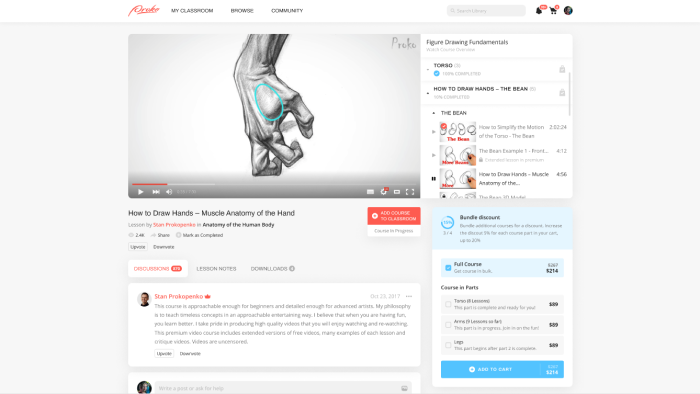
With improved resources and reduced teacher workloads, classrooms can shift to co-learning spaces. Students can arrive, learn, and engage — all at their own pace in a collaborative environment.
And that’s the true goal of education:
to create the best environment for students to learn.
Every e-learning app or web platform has to be unique to appeal to the audience so that people can relate to it. Anyone who wants to scale their brand should take a closer look at such an opportunity. This is a great time to share information and experience in your field. Contact us, so we can lead you every step of the way.
